
NFYA siRNA |
|||
| 20-abx903550 | Abbexa |
|
|
|
|||

NFYA siRNA |
|||
| 20-abx925850 | Abbexa |
|
|
|
|||

NFYA siRNA |
|||
| 20-abx925851 | Abbexa |
|
|
|
|||
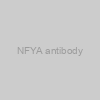
NFYA antibody |
|||
| 70R-50129 | Fitzgerald | 100 ul |
|
|
Description: Purified Polyclonal NFYA antibody
|
|||

NFYA antibody |
|||
| 70R-31644 | Fitzgerald | 100 ug |
|
|
Description: Rabbit polyclonal NFYA antibody
|
|||
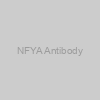
NFYA Antibody |
|||
| ABD3125 | Lifescience Market | 100 ug |
|

NFYA Antibody |
|||
| 33722-100ul | SAB | 100ul |
|

NFYA Antibody |
|||
| 33722-50ul | SAB | 50ul |
|

NFYA antibody |
|||
| 70R-18866 | Fitzgerald | 50 ul |
|
|
Description: Rabbit polyclonal NFYA antibody
|
|||

NFYA Antibody |
|||
| DF3125 | Affbiotech | 200ul |
|
|
Description: NFYA Antibody detects endogenous levels of total NFYA.
|
|||

NFYA Antibody |
|||
| 1-CSB-PA003424 | Cusabio |
|
|
|
|||
|
Description: A polyclonal antibody against NFYA. Recognizes NFYA from Human, Mouse, Rat. This antibody is Unconjugated. Tested in the following application: WB, IHC, IF, ELISA;WB:1/500-1/2000.IHC:1/100-1/300.IF:1/200-1/1000.ELISA:1/20000
|
|||

NFYA Antibody |
|||
| CSB-PA288741- | Cusabio |
|
|
|
|||
|
Description: A polyclonal antibody against NFYA. Recognizes NFYA from Human, Mouse, Rat. This antibody is Unconjugated. Tested in the following application: ELISA, WB;WB:1:500-1:3000
|
|||

NFYA Antibody |
|||
| CSB-PA288741-100ul | Cusabio | 100ul |
|
|
|||
|
Description: A polyclonal antibody against NFYA. Recognizes NFYA from Human, Mouse, Rat. This antibody is Unconjugated. Tested in the following application: ELISA, WB;WB:1:500-1:3000
|
|||

NFYA Antibody |
|||
| 1-CSB-PA015773GA01HU | Cusabio |
|
|
|
|||
|
Description: A polyclonal antibody against NFYA. Recognizes NFYA from Human, Mouse, Rat. This antibody is Unconjugated. Tested in the following application: ELISA, WB
|
|||

pUC19-NFYA |
|||
| PVT17593 | Lifescience Market | 2 ug |
|

anti-NFYA |
|||
| YF-PA24243 | Abfrontier | 50 ul |
|
|
Description: Mouse polyclonal to NFYA
|
|||
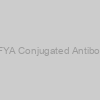
NFYA Conjugated Antibody |
|||
| C33722 | SAB | 100ul |
|
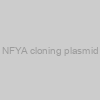
NFYA cloning plasmid |
|||
| CSB-CL015773HU-10ug | Cusabio | 10ug |
|
|
|||
|
Description: A cloning plasmid for the NFYA gene.
|
|||
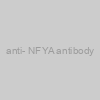
anti- NFYA antibody |
|||
| FNab05716 | FN Test | 100µg |
|
|
|||
|
Description: Antibody raised against NFYA
|
|||
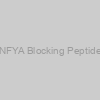
NFYA Blocking Peptide |
|||
| 20-abx063004 | Abbexa |
|
|
|
|||

NFYA Rabbit pAb |
|||
| A1998-100ul | Abclonal | 100 ul |
|

NFYA Rabbit pAb |
|||
| A1998-200ul | Abclonal | 200 ul |
|

NFYA Rabbit pAb |
|||
| A1998-20ul | Abclonal | 20 ul |
|

NFYA Rabbit pAb |
|||
| A1998-50ul | Abclonal | 50 ul |
|

NFYA Blocking Peptide |
|||
| DF3125-BP | Affbiotech | 1mg |
|
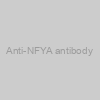
Anti-NFYA antibody |
|||
| PAab05716 | Lifescience Market | 100 ug |
|

pECMV-NFYA-3 |
|||
| PVT17624 | Lifescience Market | 2 ug |
|

Anti-NFYA antibody |
|||
| STJ111124 | St John's Laboratory | 100 µl |
|
|
Description: The protein encoded by this gene is one subunit of a trimeric complex, forming a highly conserved transcription factor that binds to CCAAT motifs in the promoter regions in a variety of genes. Subunit A associates with a tight dimer composed of the B and C subunits, resulting in a trimer that binds to DNA with high specificity and affinity. The sequence specific interactions of the complex are made by the A subunit, suggesting a role as the regulatory subunit. In addition, there is evidence of post-transcriptional regulation in this gene product, either by protein degradation or control of translation. Further regulation is represented by alternative splicing in the glutamine-rich activation domain, with clear tissue-specific preferences for the two isoforms.
|
|||
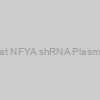
Rat NFYA shRNA Plasmid |
|||
| 20-abx985549 | Abbexa |
|
|
|
|||
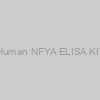
Human NFYA ELISA KIT |
|||
| ELI-13647h | Lifescience Market | 96 Tests |
|

Bovine NFYA ELISA KIT |
|||
| ELI-22188b | Lifescience Market | 96 Tests |
|

NFYA ELISA KIT|Human |
|||
| EF001216 | Lifescience Market | 96 Tests |
|
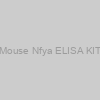
Mouse Nfya ELISA KIT |
|||
| ELI-44625m | Lifescience Market | 96 Tests |
|
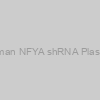
Human NFYA shRNA Plasmid |
|||
| 20-abx953186 | Abbexa |
|
|
|
|||
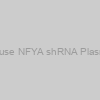
Mouse NFYA shRNA Plasmid |
|||
| 20-abx971739 | Abbexa |
|
|
|
|||
)
NFYA Recombinant Protein (Human) |
|||
| RP021172 | ABM | 100 ug | Ask for price |
)
NFYA Recombinant Protein (Rat) |
|||
| RP213854 | ABM | 100 ug | Ask for price |
)
NFYA Recombinant Protein (Mouse) |
|||
| RP153989 | ABM | 100 ug | Ask for price |
)
NFYA Recombinant Protein (Mouse) |
|||
| RP153992 | ABM | 100 ug | Ask for price |
%20(pORF))
NFYA ORF Vector (Human) (pORF) |
|||
| ORF007058 | ABM | 1.0 ug DNA |
|
%20(pORF))
Nfya ORF Vector (Rat) (pORF) |
|||
| ORF071286 | ABM | 1.0 ug DNA |
|
%20(pORF))
Nfya ORF Vector (Mouse) (pORF) |
|||
| ORF051331 | ABM | 1.0 ug DNA |
|
%20(pORF))
Nfya ORF Vector (Mouse) (pORF) |
|||
| ORF051332 | ABM | 1.0 ug DNA |
|
)
NFYA sgRNA CRISPR Lentivector set (Human) |
|||
| K1423901 | ABM | 3 x 1.0 ug |
|
)
Nfya sgRNA CRISPR Lentivector set (Mouse) |
|||
| K3857701 | ABM | 3 x 1.0 ug |
|
)
Nfya sgRNA CRISPR Lentivector set (Rat) |
|||
| K6930201 | ABM | 3 x 1.0 ug |
|
)
NFYA DNA-Binding ELISA Kit (OKAG00424) |
|||
| OKAG00424 | Aviva Systems Biology | 96 Wells |
|
|
Description: Description of target: The protein encoded by this gene is one subunit of a trimeric complex, forming a highly conserved transcription factor that binds to CCAAT motifs in the promoter regions in a variety of genes. Subunit A associates with a tight dimer composed of the B and C subunits, resulting in a trimer that binds to DNA with high specificity and affinity. The sequence specific interactions of the complex are made by the A subunit, suggesting a role as the regulatory subunit. In addition, there is evidence of post-transcriptional regulation in this gene product, either by protein degradation or control of translation. Further regulation is represented by alternative splicing in the glutamine-rich activation domain, with clear tissue-specific preferences for the two isoforms.;Species reactivity: Human, Mouse, Rat;Application: ELISA;Assay info: Assay Type: Qualitative DNA Binding ELISA ;Sensitivity:
|
|||
%20(Target%201))
NFYA sgRNA CRISPR Lentivector (Human) (Target 1) |
|||
| K1423902 | ABM | 1.0 ug DNA |
|
%20(Target%202))
NFYA sgRNA CRISPR Lentivector (Human) (Target 2) |
|||
| K1423903 | ABM | 1.0 ug DNA |
|
%20(Target%203))
NFYA sgRNA CRISPR Lentivector (Human) (Target 3) |
|||
| K1423904 | ABM | 1.0 ug DNA |
|
%20(Target%201))
Nfya sgRNA CRISPR Lentivector (Mouse) (Target 1) |
|||
| K3857702 | ABM | 1.0 ug DNA |
|
%20(Target%202))
Nfya sgRNA CRISPR Lentivector (Mouse) (Target 2) |
|||
| K3857703 | ABM | 1.0 ug DNA |
|
%20(Target%203))
Nfya sgRNA CRISPR Lentivector (Mouse) (Target 3) |
|||
| K3857704 | ABM | 1.0 ug DNA |
|
 Euro
Euro
 British Pound
British Pound
 US Dollar
US Dollar
